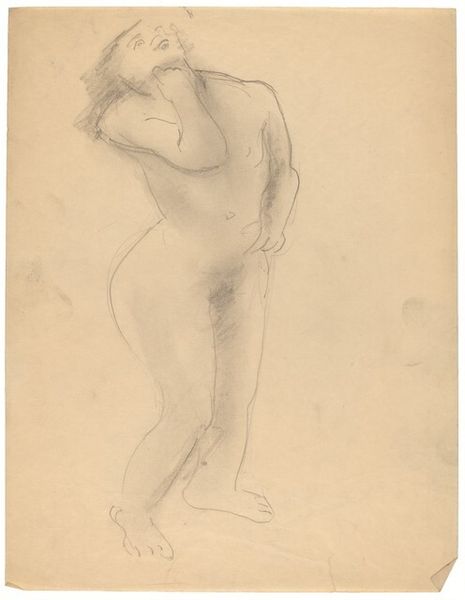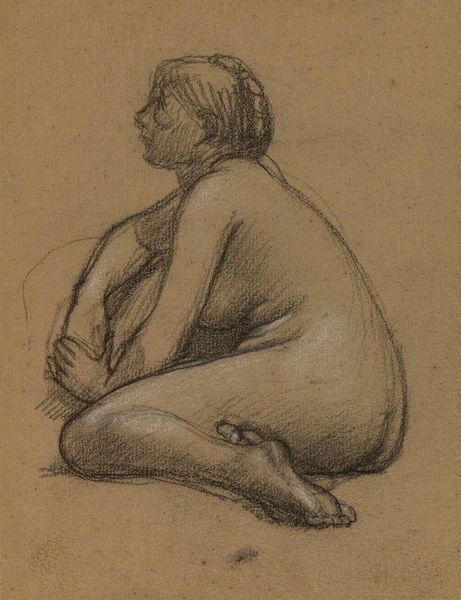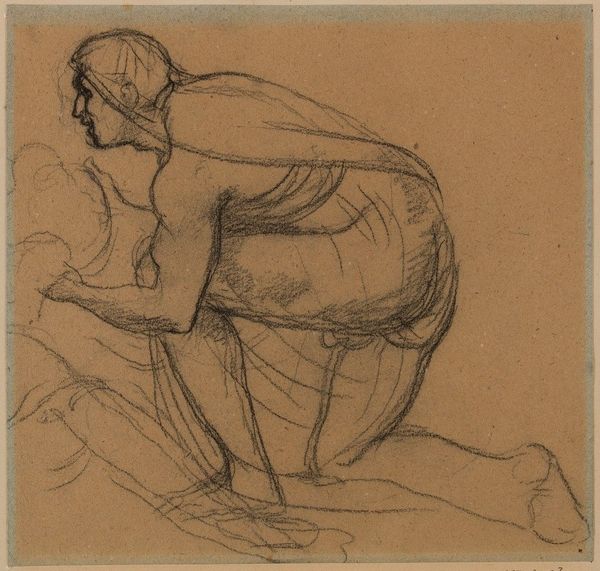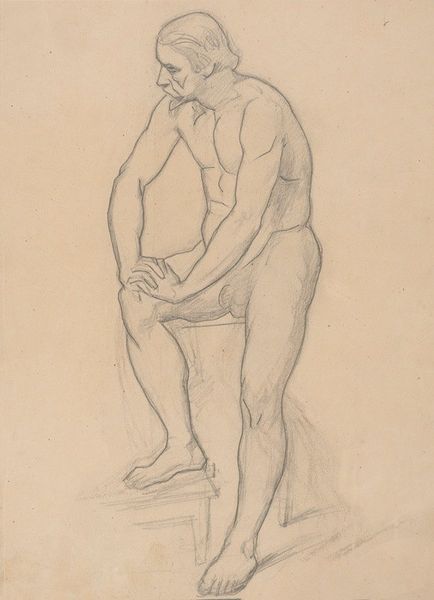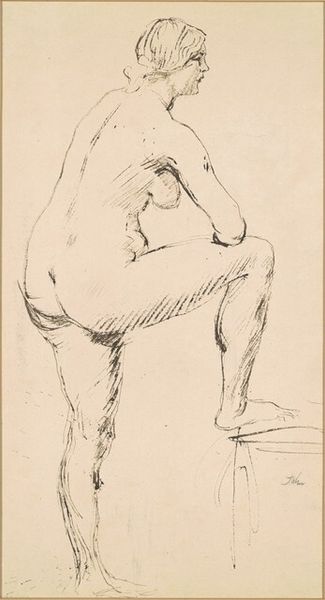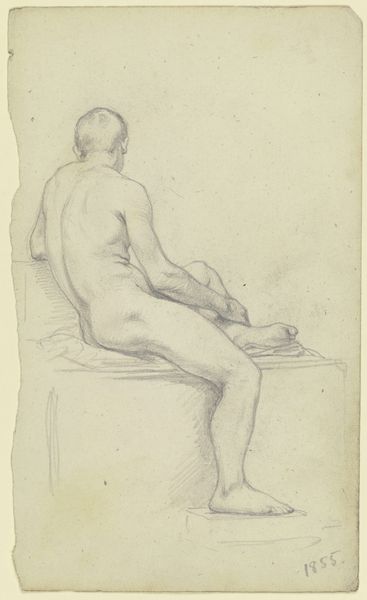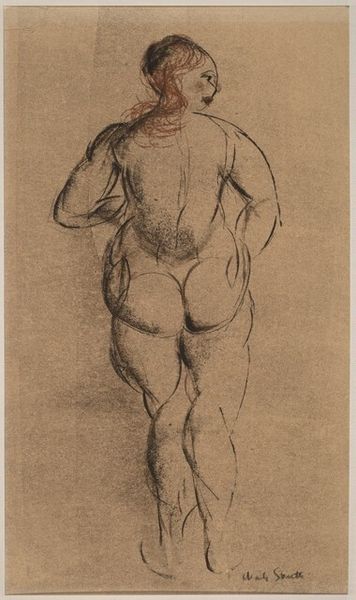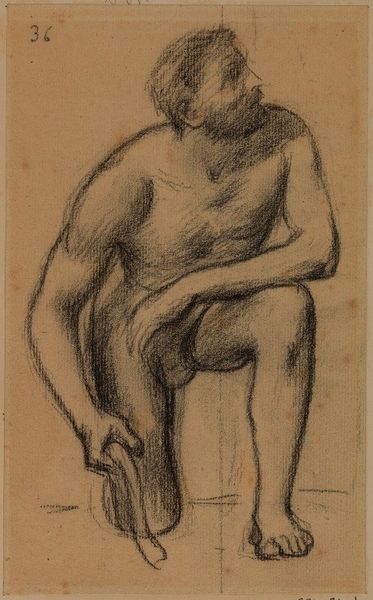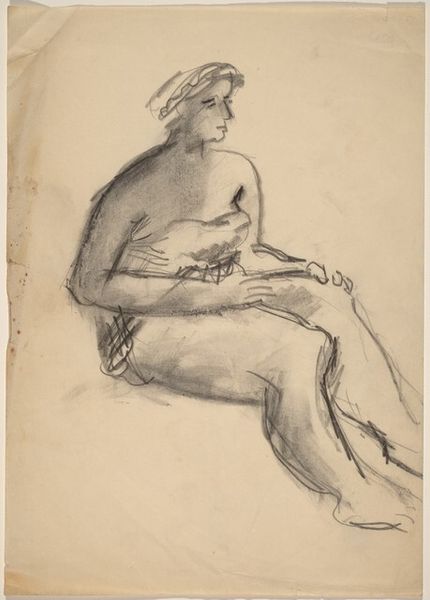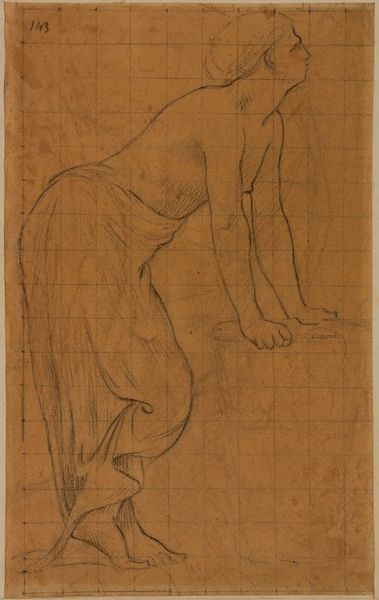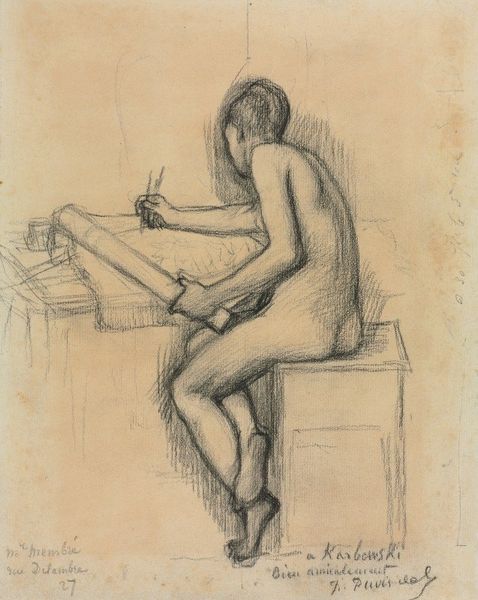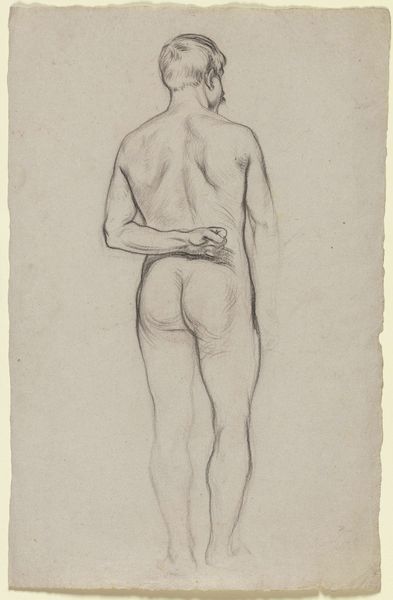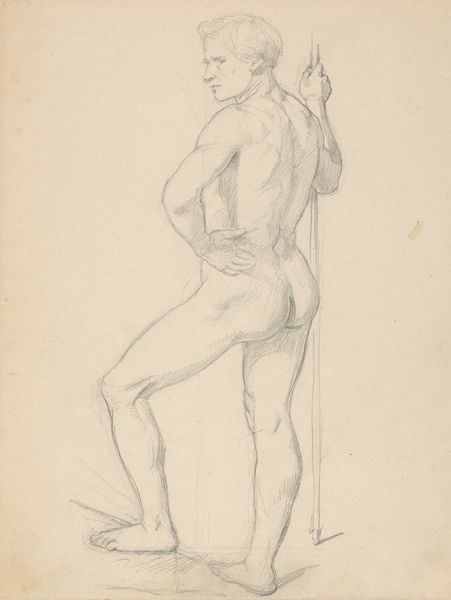
drawing, charcoal
#
drawing
#
charcoal drawing
#
figuration
#
form
#
charcoal
#
academic-art
#
nude
Copyright: Public Domain: Artvee
Curator: Here we have Pierre Puvis de Chavannes' charcoal drawing, "Femme assise, nue de dos," created around 1863. The model, seen from behind, is seated, seemingly lost in thought. Editor: My immediate impression is one of melancholy. There's something so still, so inward, about the pose. The subdued tones amplify this sense of quiet contemplation. Curator: It’s fascinating how Puvis de Chavannes uses charcoal to achieve such softness. Despite being a preparatory study, the artwork radiates a unique sensitivity and emotion. It speaks to the human condition, stripped bare in its most vulnerable form. Editor: Precisely! Nudity in art has always held potent symbolism, representing purity, truth, and our primordial state. Here, I also see vulnerability, the woman is literally and figuratively exposed. It almost feels as if we're intruding on a private moment of reflection. The grid lines visible throughout give this contemplative tableau the weight of scientific study. Curator: A good point on those grid lines. In this early work by an artist who made a name for himself in public art, the grid feels less like a cage and more like an assertion of form. But form is more than simply anatomical structure here. What would later solidify into a rejection of impressionistic dynamism began, I think, with a consideration of human nature. Editor: Absolutely. And what resonates deeply is that, despite its historical context, the work continues to evoke a sense of timeless human experience. It taps into our shared feelings of isolation, introspection, and yearning for connection. The archetypes are simple and deep: Body, Emotion, Form. The human condition made palpable. Curator: It makes one pause and reflect, doesn't it? As though, perhaps, we too might turn our backs for a moment and think. Editor: I find it profoundly moving, especially when considering that it embodies those universally experienced sentiments so beautifully rendered with something as simple as charcoal.
Comments
No comments
Be the first to comment and join the conversation on the ultimate creative platform.
